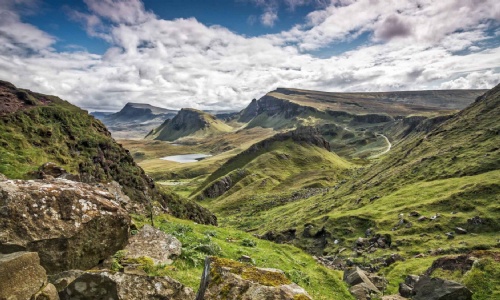‘Rereading classics; the language of Mountain Literature’ by Dr David Moses

"Rereading has been, this week, something I have discussed with the 6th Form" says Dr David Moses, Assistant Head (6th Form).
I am often in the process of rereading two particular books, both known by disciples of the genre Mountain Literature, though perhaps generally less well known by other readers. They are Nan Shepherd’s The Living Mountain, and WH Murray’s Mountaineering in Scotland and Undiscovered Scotland. It is sometimes good practice to reread books; they are never the same twice and often their meanings become more significant to us as we grow in age and understanding.
The Living Mountain is difficult to describe. It is rather like a celebration in the form of a prose-poem, or perhaps a quest, or perhaps both. It is also an inquiry into the nature of knowledge, especially in its final chapters. Shepherd herself called it a “traffic of love” with the mountains, and that word “traffic” implies for her the idea of “exchange” and reciprocity between the land and its lovers. It is because of that comment that I think its genre is that of love story. It is unusual in that most works of mountain literature are written by men, and most male mountaineers are focused on the goal of the summit. Shepherd, though, wanders into the Cairngorms “merely to be with the mountain as one visits a friend… I am on the plateau again, having gone round it like a dog in circles to see if it is a good place… I think it is, and I am to stay up here for a while.” I love this description because it is not about rushing, or ticking-off a list (I am guilty of that, I know), but about fully experiencing. It is for me a metaphor for educational enrichment. Passing a test and actually understanding something might be two different things. Finding the path through the mountains is surely also about finding a path through language and literature. Shepherd’s poetic description of the living Cairngorms is compulsive and cultivates a wonderful vocabulary, the likes of which I encourage students to make their own. In the process – something I aimed to raise awareness of for our young people – it is good if not excellent to take up advocacy for the mountains and wild places and countryside, and to hail the rejuvenating power of our environments.
Most importantly, though, Shepherd understands that ‘going out’ is really all about ‘going in’, and she shares this with WH Murray. His spiritual thinking was one of reverence for and celebration of wild places, not in the sense where man is dominant or even a steward of the earth, but as ecocentric; the earth does not belong to man: man belongs to the earth. In his work he uses a phrase after a very special night spent outdoors in Glencoe, and which later became the title of his autobiography. He says that in the mountains we may find the “evidence of the things not seen” – the spiritual dimensions of our world which are at first sight taken for granted or beyond our ken. As Shepherd, he links his experience of Nature with the notion that there is something important that it signifies, and which is in some way embodied in the landscape.
I speak about these books often. What I encourage our pupils to see is that such writers have developed their ability to express their world, to gather a vocabulary which takes them beyond mere description to the life going on within, or even beyond a place. Murray suggested quite explicitly why ‘connection’ with the land is so important: “We might remember that despite our almost overwhelming technology, we are still flesh and bone” and thus a part of our environment. I have explained at St John’s evening assembly that Murray’s experiences in the mountains often come across as holy ones, and as though he has separated from his former self to become someone refreshed.
Murray tried his vocation as a Benedictine monk before his horrific war-time experiences between 1939 and 1945. The monastery was not for him; instead he found the cathedral of the mountains his spiritual home. His search for mystical meaning became bound inextricably with his devotion to the mountains and wild landscapes. They helped him to discover realms of his own life that he was previously unaware of. He felt mountains enabled him to go beyond the limits of his own human-centred thinking. He could not take the sacred out of wildness, as his sometimes biblical language gives away: “Wisdom standeth at the top of high places. From our promontory we look up to the cloud of unknowing that wraps the last height, and from its radiance we know the summit is in sunlight.” (Mountaineering in Scotland)
